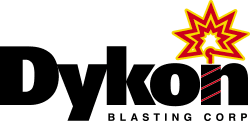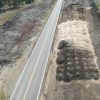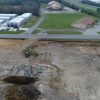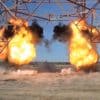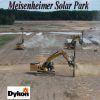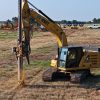PROJECT DETAILS
At 3:00 PM, Sunday, March 11th, Marty Hunter of Hunter Demolition contacted Jared Redyke with an emergency job.
A Union Pacific freight train derailed on the bridge over the Sulfur River, near Naples, Texas. The wreck took out two of the bridge piers in the middle of the river.
No injuries, no casualties, and no hazardous waste in the river. But the railroad line was paralyzed until a new bridge could be constructed.
The exact cause of the derailment was not known but track failure was suspected. The freight cars tore through the bridge decking and sheared 2 piers off and left them in the middle of the river with bridge beams, rail cars, and cargo lying on top of them.
The pilings for the new bridge could not be driven until these concrete piers were moved out of the way.
Hulcher Services was onsite 24 hours a day pulling the wrecked freight cars from the river. Hunter Demolition was in charge of removing those concrete bridge piers from the path of the new bridge being constructed from both ends, 24 hours a day.
The water over the reinforced concrete piers was so deep that it was making mechanical methods of concrete demolition difficult and time consuming. The bridge had to be completed and the railroad line opened as soon as possible.
New bridge construction was coming from both sides and meeting in the middle of the river, and time was growing short. The bridge crew would soon have to stop if those piers weren’t out of the way. There was only one way to get those underwater piers demolished on schedule.
Dykon arrived onsite, ready to go, at 1:30 AM, Monday morning, March 12th, less than 8 hours after being called.
Following a 6:00 AM meeting with the onsite project managers, Marty Hunter with Hunter Demolition ordered floating barge sections for Dykon’s drilling equipment to work off of. The next task was to get this equipment to the wreck site. There was no road access to the site closer than half a mile. Everything had to be loaded on freight cars, railed in and offloaded with cranes into the work area.

